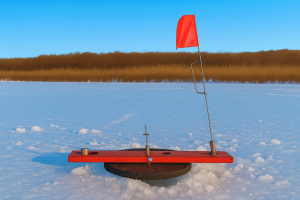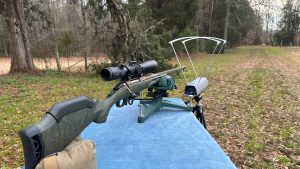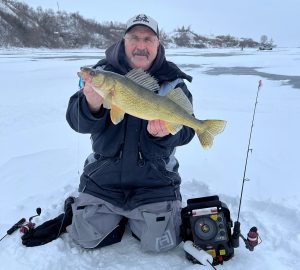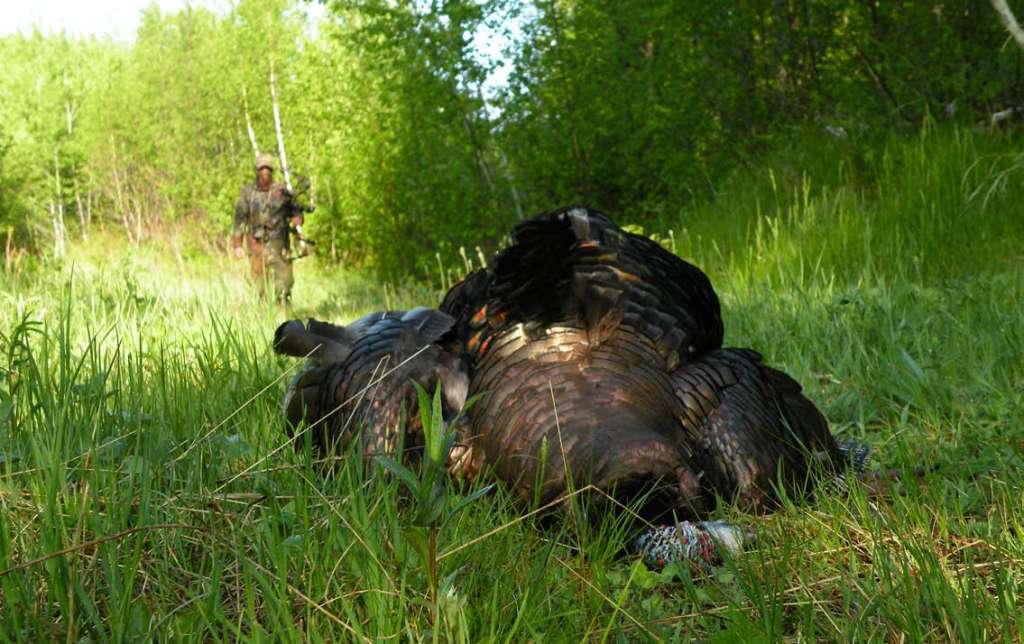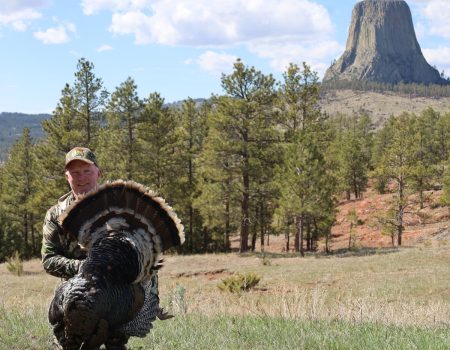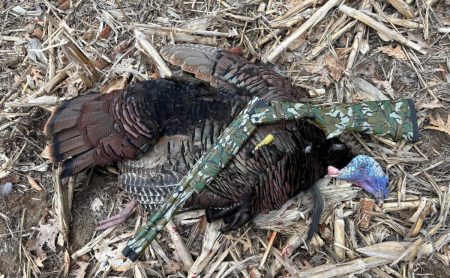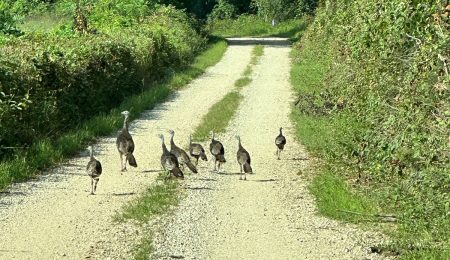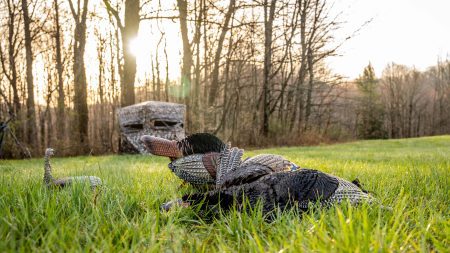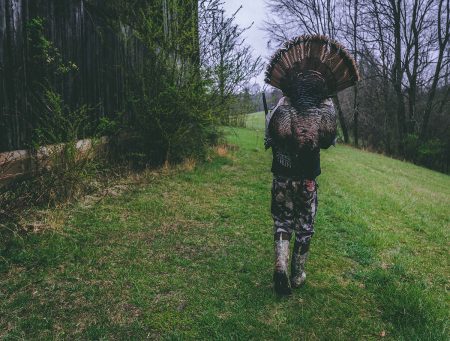Tips to Steer You Toward Success When You Hunt on Land Open to All
Carefully, I tiptoed down a logging road that cuts through the red pine plantation I’d selected for a public-land outing. A bellowing gobble shook the timber and welcomed in the dawn. I quickly plugged my hen and jake decoys into the soil on the logging road, then scuttled off amidst the pines and deployed my tripod chair against a red pine to disrupt my outline. The roosted tom gobbled a few more times as I was setting up, meaning he hadn’t caught onto my plan.
I scratched off a few subtle, monotone tree yelps on my slate call. GOBBLE GOBBLE GOBBLE!
I waited for a few moments, then tree-yelped again. He responded again. After a few moments, I offered a final series of tree yelps, which he immediately answered. I set my call down and let curiosity manifest itself within his pea-sized brain. Then, wingbeats signaled that he’d descended from his perch. In the calmness, I heard him spitting and drumming down the logging road. Perfect, I thought. It’s all over but the shooting.
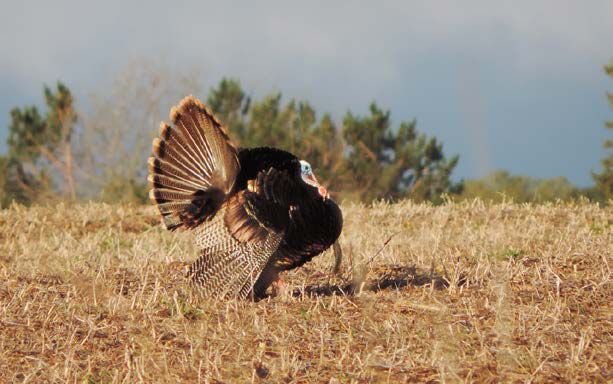
The strutting tom came on a beeline, obviously jealous of my jake decoy. I drew in one fast motion when his eyeball disappeared behind a red pine trunk. When he popped out, he was about 18 yards away and deflated from full strut to half strut, most likely trying to identify what I was.
My pin settled and the shot was true, although the bird didn’t twitch as the arrow blew through him. The arrow’s lethal effects took hold, and the gobbler toppled into a rut near the decoys. It was less than five minutes into legal shooting time, and I had silently swiped a spring prize from a 40-acre parcel of public land.
Bowhunting turkeys on public land can be very difficult, especially in areas of high hunting pressure. But if you want to bow-kill a turkey and don’t own hunting land, then it’s time to saddle up the public-land horse and test your wits against some of the sharpest birds there are.
Before you do, brush up your arsenal with the following tips. They’ll help your personal odds in a game with very low success rates. Let’s review.
Locate Difficult Access
Most hunters don’t want to hike very far to hunt turkeys. Use that issue to your advantage. With a map-based phone app such as onX Hunt, uncover tough-to-reach pockets that appear to feature ideal turkey habitat— mature trees, water, ridges, and openings. Don’t expect that every such location is teeming with gobblers, but if you find enough tough access spots, it’s probable that at least one will hold a tom or two that you can pursue.

Hunt Where Public Timber Adjoins Private Agriculture
Whenever I study public lands on my onX app, I specifically look for locations where the public abuts private agricultural fields. In a location like this, turkeys commonly roost on the public areas, then fly down and spend some time in the private agriculture strutting and feeding before moving back into the timber mid-morning. Usually, they’ll visit the private field again prior to roosting late in the afternoon. This come-and-go turkey traffic presents an ideal scenario for the patient hunter. Mid- morning when the birds come from the private back onto the public is an especially great time to capitalize.
Hunt Midday
If you don’t score on a bird within the first two hours, don’t hang it up for the day unless work calls. Many other hunters leave the woods after only a couple of hours, so diminished human presence and gobblers roving to find a midday date create an ideal opportunity. I’ve run a high risk of calling in toms that answer my call from mid- morning to mid-afternoon.
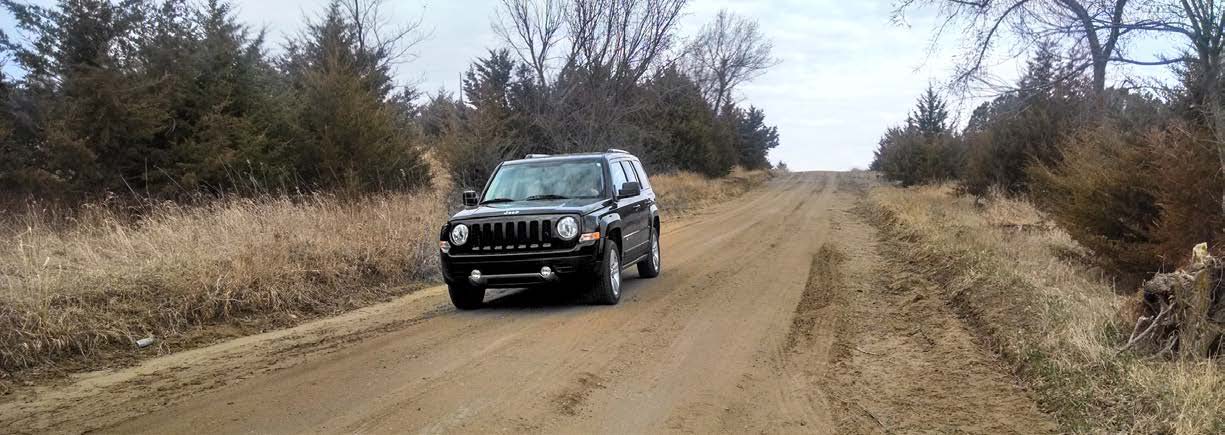
Hunt Overlooked Small Parcels
It’s easy to ignore smaller parcels of 10 to 40 acres, but on the right day, small parcels can produce big action. The other great thing is that it doesn’t take long to determine if they’re worth your time. Either a tom hammers back when you call, or doesn’t, and then you can move on. Just remember that tons of folks overlook these, especially the smallest ones.
Identify Private Land Open to Public Hunting
Most states have some form of private lands that are open to the public for hunting. In Wisconsin, they’re lands enrolled in MFLO (Managed Forest Land Open). In Idaho, learn about Access Yes! In Montana, it’s Block Management. Regardless of the state where you hunt, sniff out opportunities that aren’t stamped with big public-land signs and multiple parking areas that invite heavy hunting pressure. In my experience, I’ve never encountered another turkey hunter while on MFLO lands in Wisconsin.

private lands that are enrolled in a program that provides hunting access. (Photo by Darron McDougal)
Cover Lots of Ground
No matter how ideal a habitat appears, most public lands don’t hold high numbers of turkeys. I can’t count how many parcels I’ve popped into that looked better than some private lands I’ve hunted, yet I couldn’t strike up the gobbler band. Ideal habitat or not, you can’t wish a gobbler into existence. In other words, keep moving.
I usually have my QuietKat e-bike and use it when/ where legal to cover lots of ground very quickly. I call, ride 75 yards ahead, then call. If nothing responds, I move on to the next parcel and don’t slow down until I get a tom to gobble. This is how you find opportunities to bow-kill toms. Be sure to read the accompanying sidebar, as it relates very closely to this strategy.
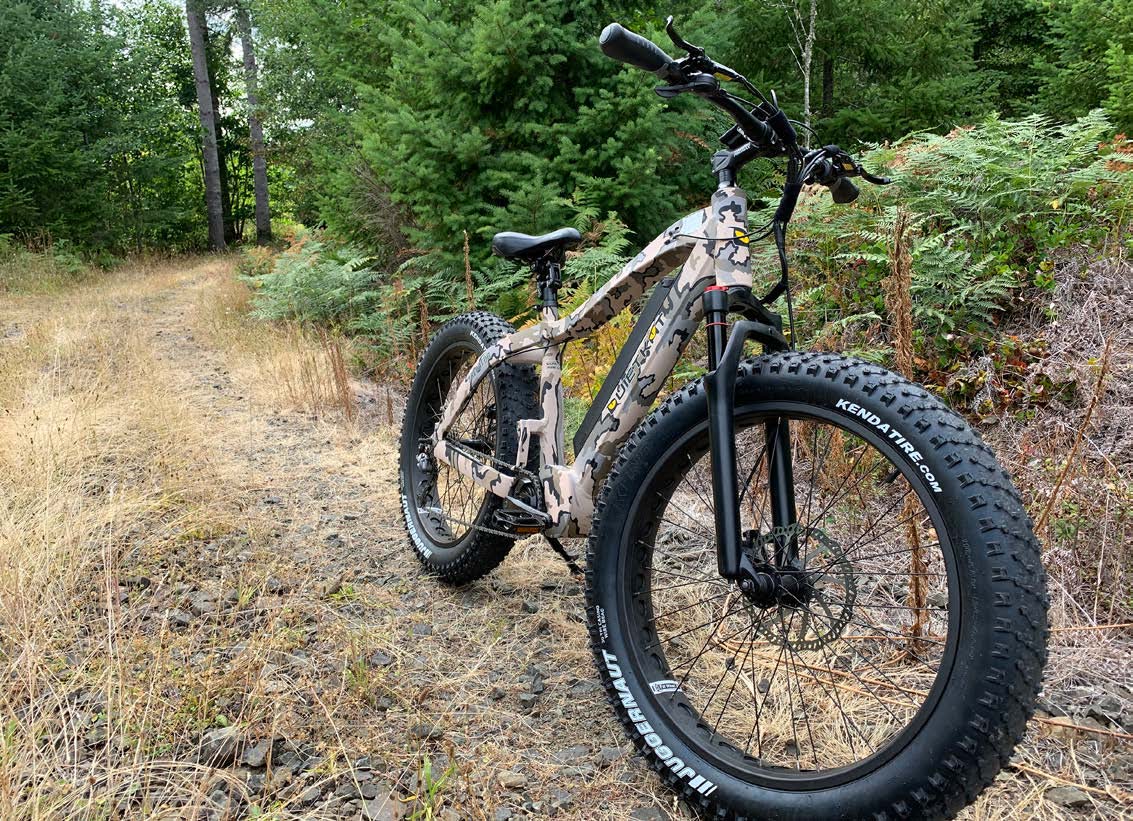
Book End
Every public-land tom I’ve thumped with my bow holds a special place in my bowhunting-memory bank. They’re usually harder to kill than private-land birds, especially with a bow. Other hunters have an equal chance to hunt and harvest them. In fact, they’ve outsmarted other hunters, most likely for at least two seasons. If and when you get your gobbler with a bow on public land, you’ll know exactly what I mean.
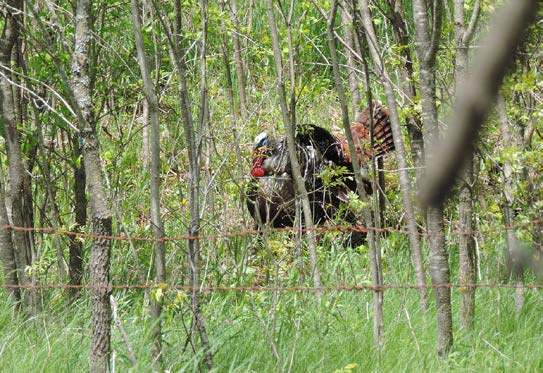
Bonus Tip:
GO BLINDLESS
In most cases, folks bow hunt turkeys from ground blinds. They’re absolutely money for staying hidden and reaching full draw. But that comes at the expense of immobility. It’s not that you can’t carry a ground blind and make multiple setups, but more that it takes time to break down a blind, stuff it in its case, hike several hundred yards to a new setup, and then set it up again. It takes more time and makes more commotion than if you ditch it and go blindless.
It might seem daunting to bow hunt wise public-land gobblers without a blind, but when I break the chains, I can cover more ground faster and with less effort. However, you must have an eye for creative setups that truly hide you. We’re not talking about getting a tom to poke his head up 40 yards away. We’re talking about pulling that tom within 20 yards and reaching full draw undetected. The setups you choose can spell success or failure.
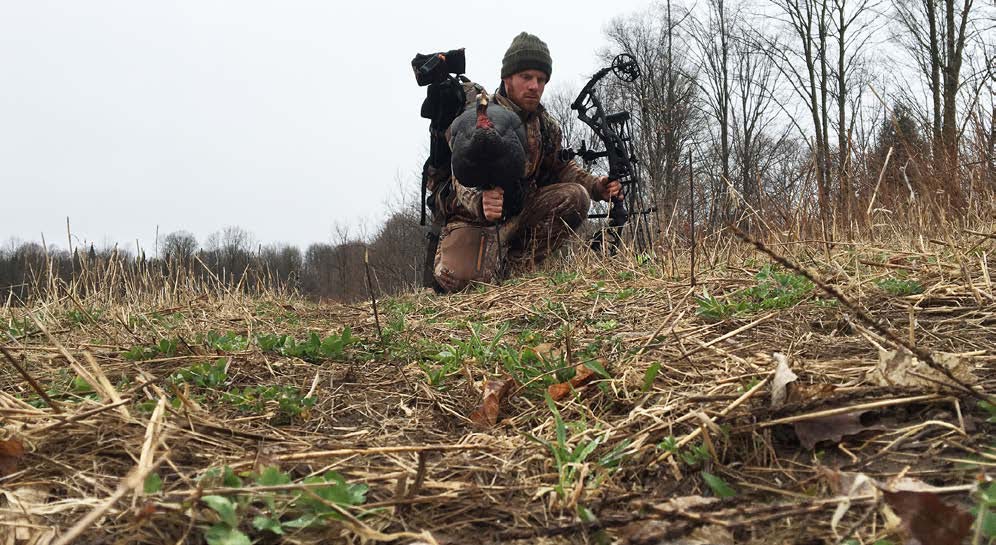
Per our affiliate disclosure, we may earn revenue from the products available on this page. To learn more about how we test gear, click here.

